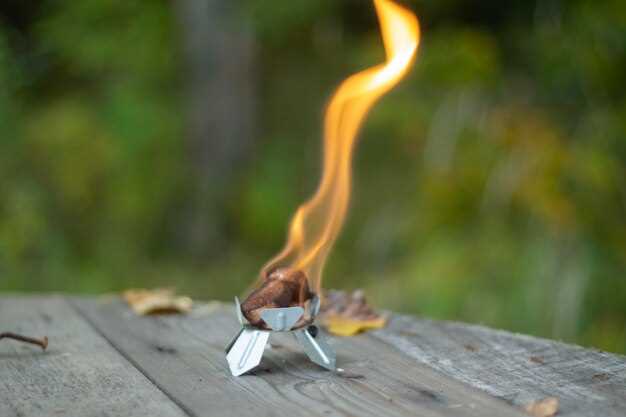
In the great outdoors, the ability to start a fire is essential for warmth, cooking, and even signaling for help. However, there may be times when matches are not an option. Whether you’re an avid camper, a dedicated survivalist, or simply someone who enjoys the challenge, learning how to start a fire using methods other than matches is a valuable skill.
Various techniques exist for igniting a fire from readily available materials, each with its own advantages and challenges. From friction-based methods to chemical reactions, understanding these alternative approaches can empower individuals to create a reliable source of heat and light in any situation. This article explores several effective methods for starting a fire without the convenience of matches, equipping you with the knowledge to tackle a range of outdoor scenarios.
By mastering these fire-starting techniques, you not only enhance your outdoor skills but also ensure your safety and survival in the wild. Prepare to discover the art of creating a flame from the simplest of resources and learn how to adapt to your environment effectively.
Using Friction-Based Techniques for Fire Starting
Friction-based techniques are among the most ancient methods of fire starting. They rely on the principle of creating heat through the friction between two surfaces. This method is widely recognized for its accessibility and efficacy, particularly in survival situations.
One common friction method is the hand drill. This technique involves a straight, flexible spindle that rotates against a fireboard. By rolling the spindle between your palms and applying downward pressure, you generate heat. A small pile of dry grass or debris placed beneath the drill collects the resulting embers, allowing you to transfer them into your fire lay.
Another effective approach is the bOw drill, which involves a spindle and a bow made of flexible material. The bow is used to facilitate faster rotation of the spindle against the fireboard, significantly reducing the physical effort required. This method is popular due to its efficiency and is often preferred by those seeking to start a fire quickly.
In both methods, the choice of materials is essential. Softwoods, such as cedar or pine, are preferable for the fireboard, while hardwoods can be used for the spindle. Ensuring both pieces are dry enhances the chances of successful ember creation. Proper technique and perseverance are crucial, as it may take multiple attempts to succeed in generating a fire.
Mastering friction-based fire starting techniques not only provides a means of survival but also fosters a deeper connection with ancient practices, enhancing your outdoor skills and confidence.
Exploring Steel and Flint as Fire Ignition Tools

Steel and flint represent one of the most traditional methods of starting a fire, particularly valued in bushcraft practices. This technique relies on the principle of generating a spark through the striking of steel against flint, a hard and brittle type of rock. The impact creates tiny fragments of steel that heat up due to friction and can ignite a suitable tinder material.
To effectively use steel and flint, a few essential components are required: a high-carbon steel striker, a piece of flint, and dry tinder. The tinder can be natural materials such as dry grass, leaves, or bark, which can easily catch a spark and ignite. When striking the steel against flint, the angle and force of the strike are crucial to maximize spark generation.
This method of igniting fire is reliable and sustainable for bushcraft enthusiasts, as both flint and steel can be sourced from natural environments. Mastering this technique not only enhances survival skills but also deepens one’s connection to traditional practices. Using steel and flint allows for consistent fire-making capabilities, even in adverse weather conditions, making it an invaluable tool for any outdoor adventure.
In conclusion, steel and flint provide a powerful means of fire ignition that can be skillfully employed in bushcraft scenarios. This method not only rejects reliance on modern conveniences but also promotes a greater appreciation for the raw elements of nature and survival skills.
Creating Fire with Chemical Reactions and Natural Materials

Starting a fire can be achieved through various chemical reactions using easily accessible natural materials. Understanding these methods allows individuals to harness the power of chemistry in survival situations.
One effective approach involves mixing sodium bicarbonate (baking soda) with sugar. When heated, this combination produces carbon dioxide and water, but if ignited with a spark or flame, it can rapidly increase in temperature, leading to combustion. This reaction requires a heat source to initiate, making it crucial to prepare a suitable fire setup.
Another interesting method is the reaction between potassium permanganate and glycerin. When these two substances are combined, they create an exothermic reaction that generates enough heat to catch nearby tinder on fire. For this method, ensure you have dry, flammable material readily available to maximize the potential for starting a fire.
Natural materials like charcoal can also play a pivotal role in creating fire. Placing charcoal in a pile and introducing a small amount of lighter fluid can help ignite the fire quickly. Alternatively, natural accelerants such as resin from trees can make for excellent starter materials when combined with more combustible goods.
It’s important to remember that while chemical reactions and natural resources can assist in starting fires, safety should always come first. Ensure proper safety measures are in place, as the generation of fire can lead to uncontrollable consequences if not managed correctly. Experimenting with these reactions in controlled environments can enhance one’s fire-starting proficiency and knowledge.


